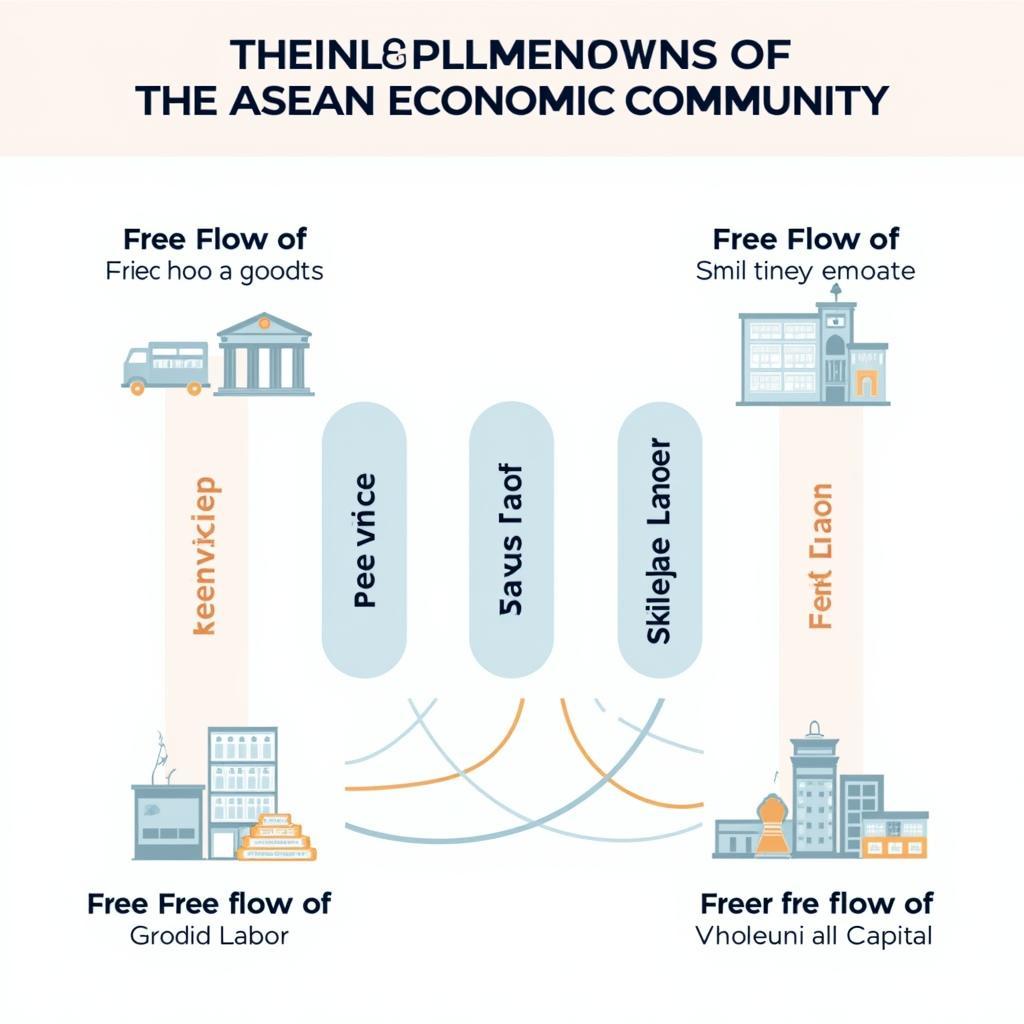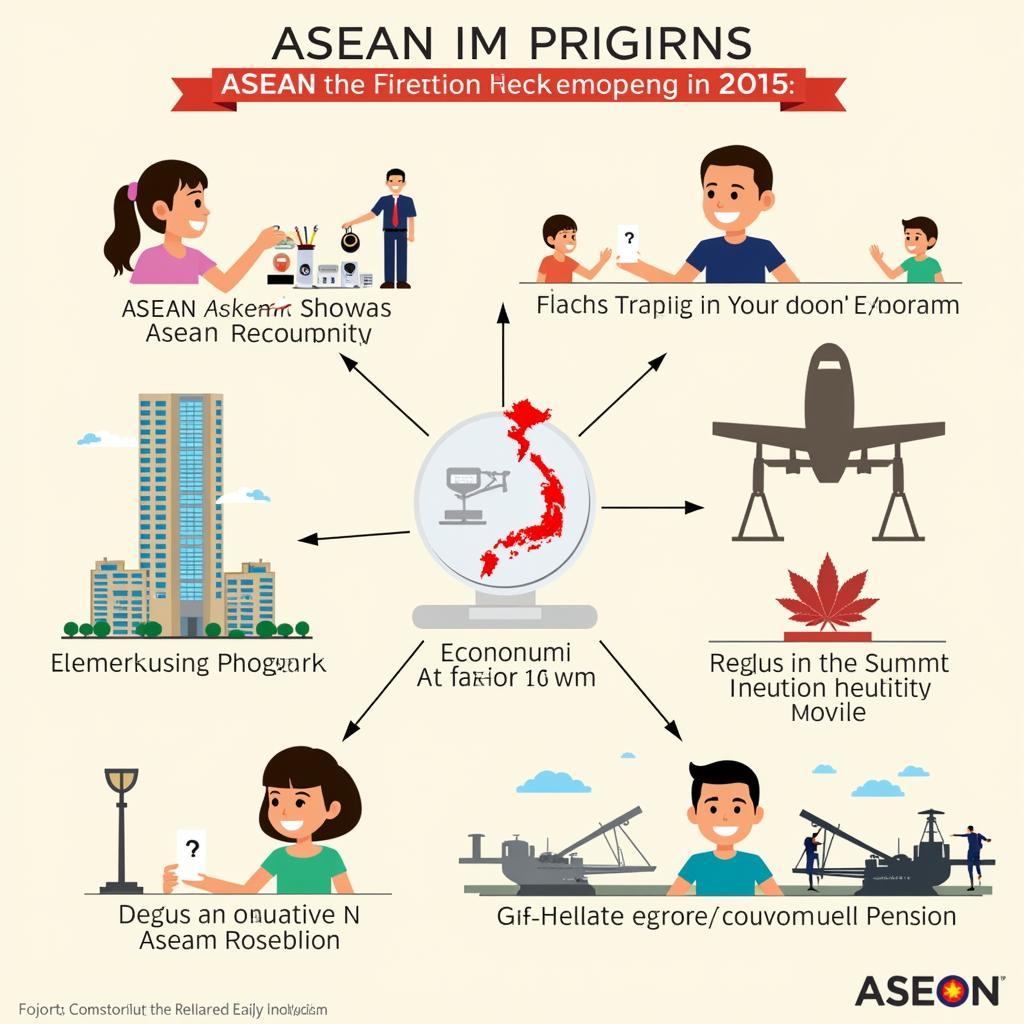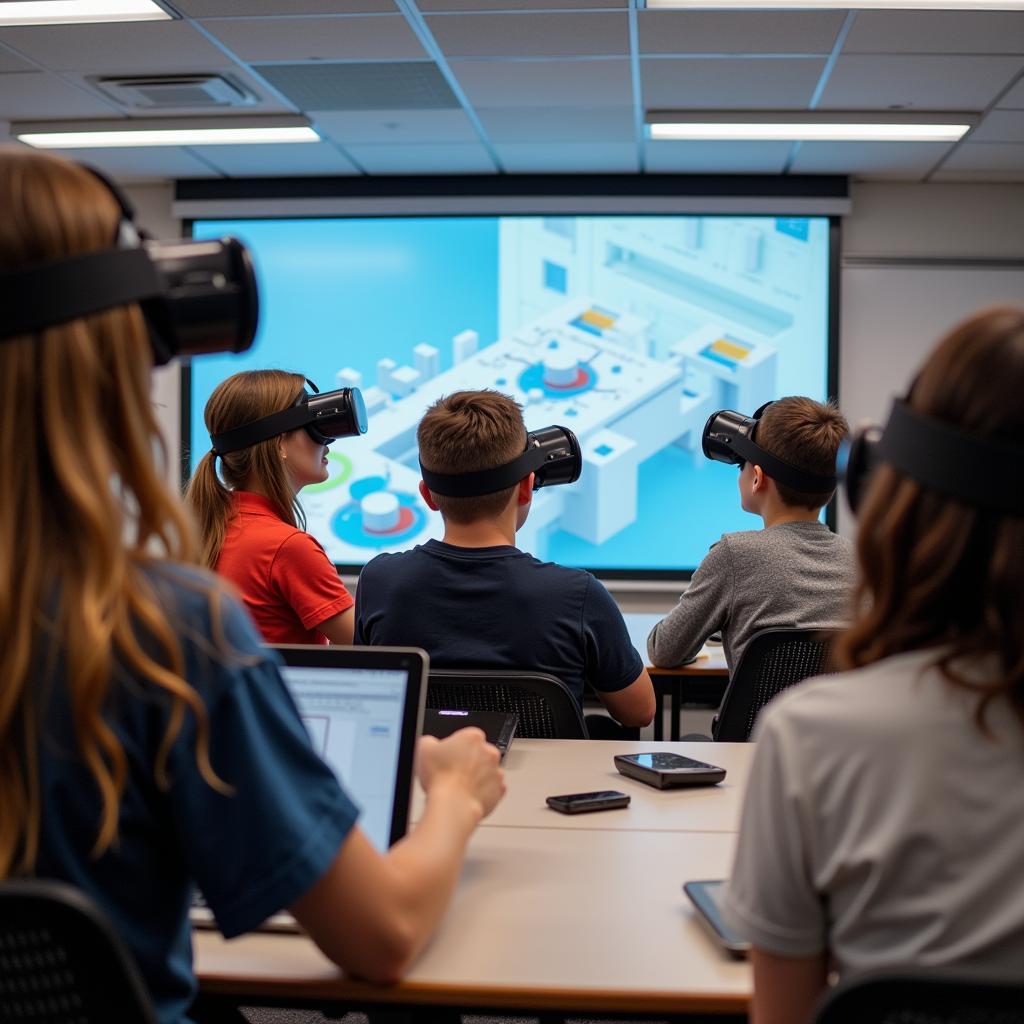The Aims Of Asean 2015 marked a pivotal moment in the journey of the Association of Southeast Asian Nations. This year saw the formal establishment of the ASEAN Economic Community (AEC), a milestone that aimed to transform Southeast Asia into a single market and production base. This article delves into the key objectives and aspirations that drove ASEAN in 2015, exploring their impact and relevance in shaping the region’s future. Whats ASEAN provides a broader overview of the organization’s history and purpose.
The Vision of ASEAN 2015: A Deep Dive
The primary aim of ASEAN in 2015 was the realization of the AEC. This ambitious project sought to create a more integrated and competitive economic region by focusing on four key pillars: free flow of goods, free flow of services, free flow of skilled labor, and freer flow of capital. Beyond economic integration, 2015 also saw ASEAN striving to enhance its political-security cooperation, socio-cultural community, and external relations. These aims were interconnected, reflecting a holistic vision for a more prosperous, stable, and integrated Southeast Asia.
The Four Pillars of the AEC: Building a Unified Market
The AEC’s four pillars represented the foundation of ASEAN’s 2015 goals. They aimed to dismantle trade barriers, facilitate the movement of professionals, and promote investment within the region. The free flow of goods aimed to reduce tariffs and non-tariff barriers, creating a level playing field for businesses across ASEAN. The free flow of services sought to liberalize service sectors, allowing for greater cross-border competition and collaboration. Similarly, the free flow of skilled labor aimed to facilitate the movement of professionals within the region, addressing skill gaps and fostering knowledge sharing. Finally, the freer flow of capital aimed to encourage investment and create a more dynamic financial landscape within ASEAN.
 ASEAN Economic Community Pillars: Visual Representation
ASEAN Economic Community Pillars: Visual Representation
What were the key goals of the AEC in 2015? The AEC in 2015 aimed to create a single market and production base, promoting regional economic integration and competitiveness.
Beyond Economics: Strengthening Regional Cooperation
While the AEC was a central focus, the aims of ASEAN in 2015 extended beyond purely economic considerations. Strengthening political-security cooperation was another key priority. This involved enhancing dialogue and mechanisms for conflict resolution, promoting regional stability, and addressing shared security challenges such as transnational crime and terrorism. Furthermore, ASEAN recognized the importance of fostering a strong socio-cultural community. Initiatives promoting cultural exchange, educational cooperation, and people-to-people connectivity were seen as essential for building a sense of shared identity and fostering regional cohesion. ASEAN Goals provides a comprehensive overview of the organization’s objectives.
 ASEAN 2015: Cooperation Beyond Economics
ASEAN 2015: Cooperation Beyond Economics
How did ASEAN aim to enhance political-security cooperation in 2015? ASEAN aimed to strengthen political-security cooperation through enhanced dialogue, conflict resolution mechanisms, and addressing shared security challenges.
Challenges and Opportunities: Navigating the Path Ahead
The aims of ASEAN 2015 were ambitious and faced numerous challenges. Disparities in economic development, regulatory frameworks, and infrastructure across member states posed obstacles to seamless integration. Furthermore, political and social differences required careful navigation to ensure consensus and maintain regional stability. Despite these challenges, the aims of ASEAN 2015 presented significant opportunities for growth and development. The AEC had the potential to unlock new markets, attract foreign investment, and create jobs, contributing to poverty reduction and improved living standards. Member nations of ASEAN explains the diverse composition of the organization.
Expert Insights: Reflecting on ASEAN’s 2015 Ambitions
Dr. Anya Sharma, a prominent Southeast Asian economist, noted, “The aims of ASEAN 2015 were a bold step towards realizing the region’s economic potential. While challenges remain, the AEC laid the groundwork for greater integration and prosperity.” Mr. Kien Nguyen, a political analyst specializing in ASEAN affairs, added, “The focus on political-security and socio-cultural cooperation alongside economic integration demonstrated ASEAN’s commitment to building a comprehensive and resilient regional community.”
 ASEAN 2015: Balancing Challenges and Opportunities
ASEAN 2015: Balancing Challenges and Opportunities
Conclusion: The Legacy of ASEAN 2015
The aims of ASEAN 2015 represented a significant milestone in the organization’s history. The establishment of the AEC and the focus on broader regional cooperation laid the foundation for a more integrated, prosperous, and stable Southeast Asia. While challenges persist, the legacy of ASEAN 2015 continues to shape the region’s trajectory, driving its journey towards greater connectivity and shared prosperity. Article ASEAN provides a collection of insightful articles on ASEAN related topics. AEC 2025 delves deeper into the long-term vision of the AEC.
FAQ
- What was the main goal of ASEAN in 2015? The primary goal was the establishment of the ASEAN Economic Community (AEC).
- What were the four pillars of the AEC? Free flow of goods, services, skilled labor, and freer flow of capital.
- What were the non-economic aims of ASEAN 2015? Strengthening political-security cooperation and enhancing the socio-cultural community.
- What were some challenges faced by ASEAN in 2015? Disparities in economic development, regulatory frameworks, and infrastructure.
- What were the potential benefits of the AEC? Increased trade, investment, job creation, and poverty reduction.
- How did ASEAN aim to promote regional stability? Through enhanced dialogue and mechanisms for conflict resolution.
- What was the significance of socio-cultural cooperation? It aimed to foster a sense of shared identity and regional cohesion.
Need assistance? Contact us 24/7: Phone: 0369020373, Email: [email protected] or visit us at: Thon Ngoc Lien, Hiep Hoa, Bac Giang, Vietnam.

